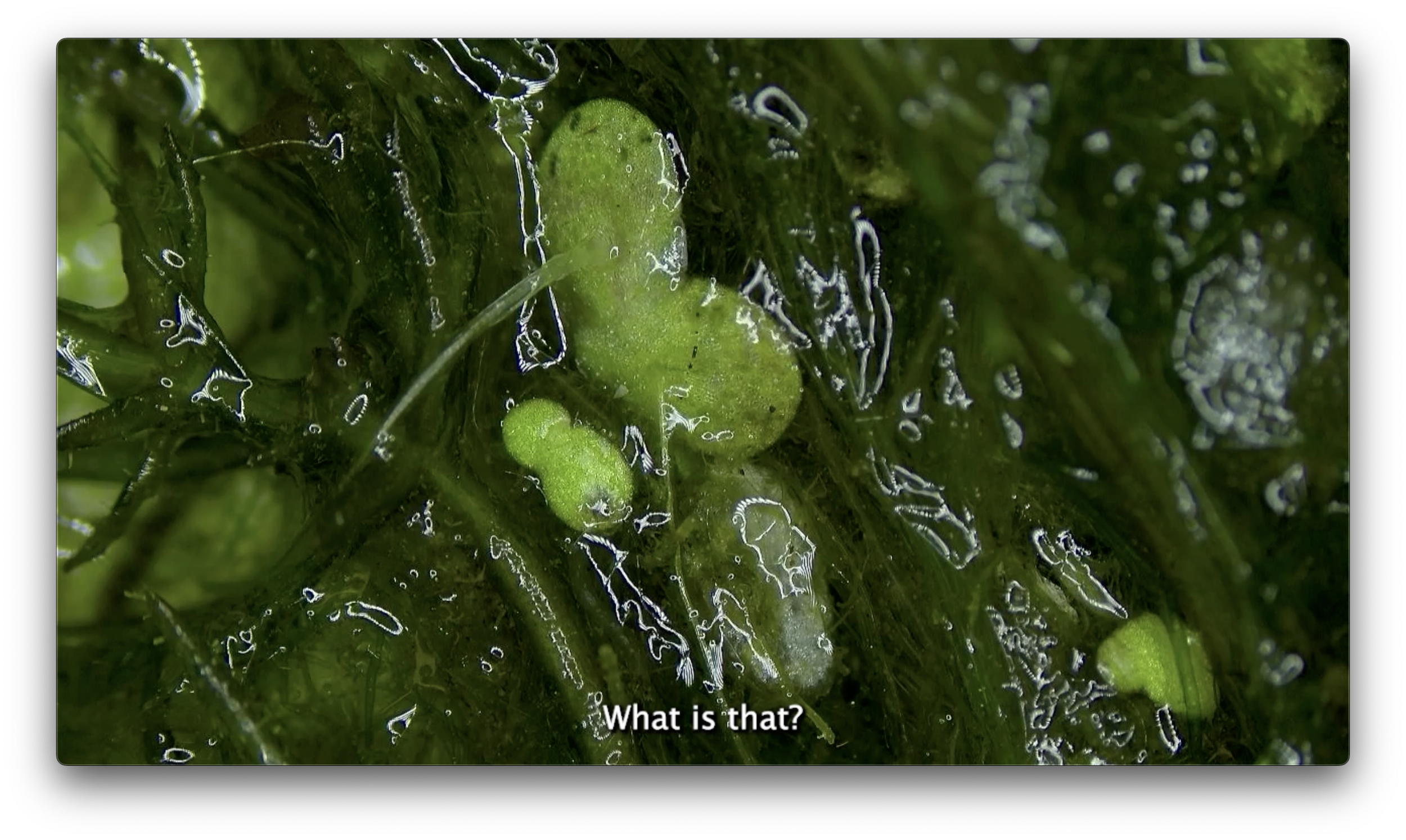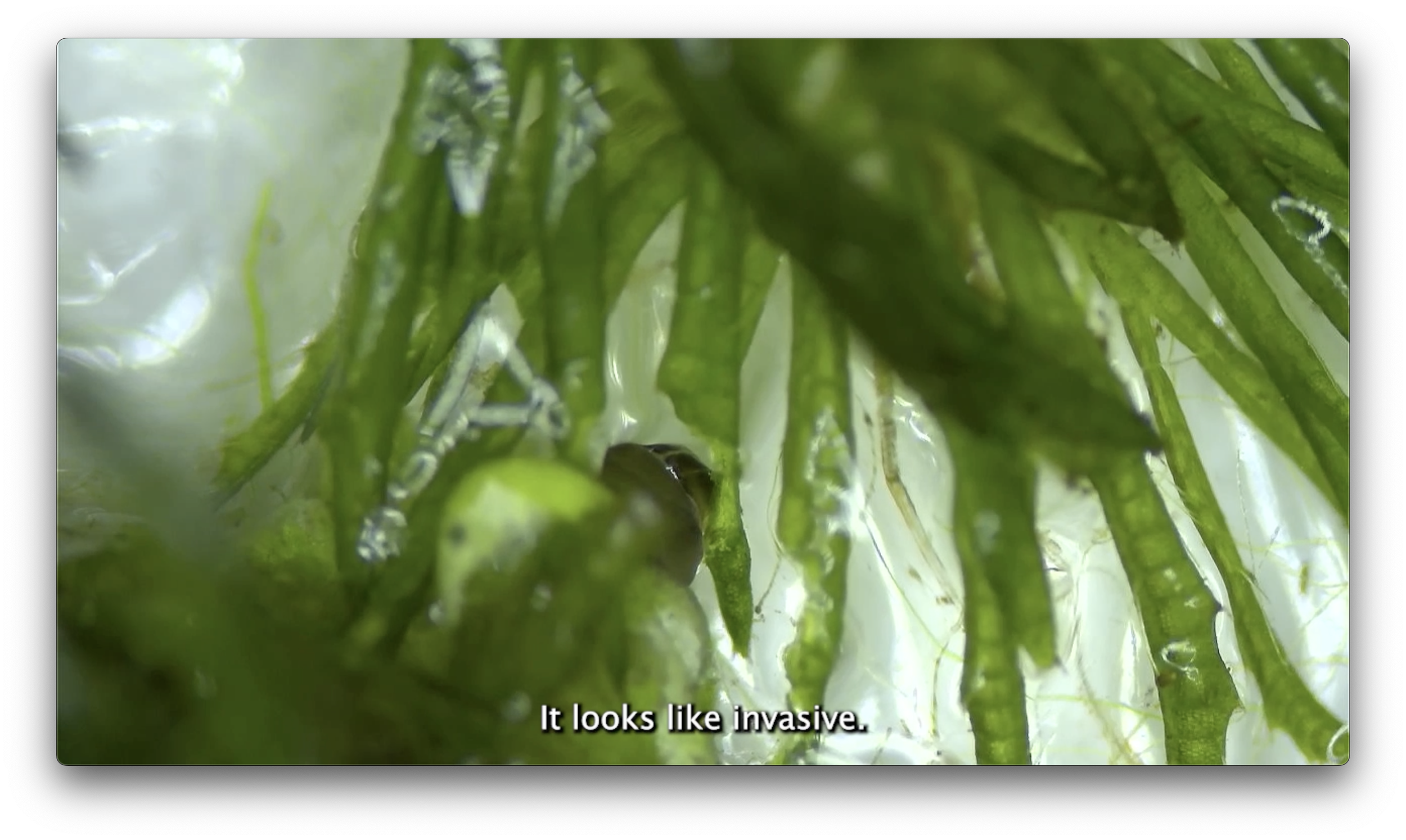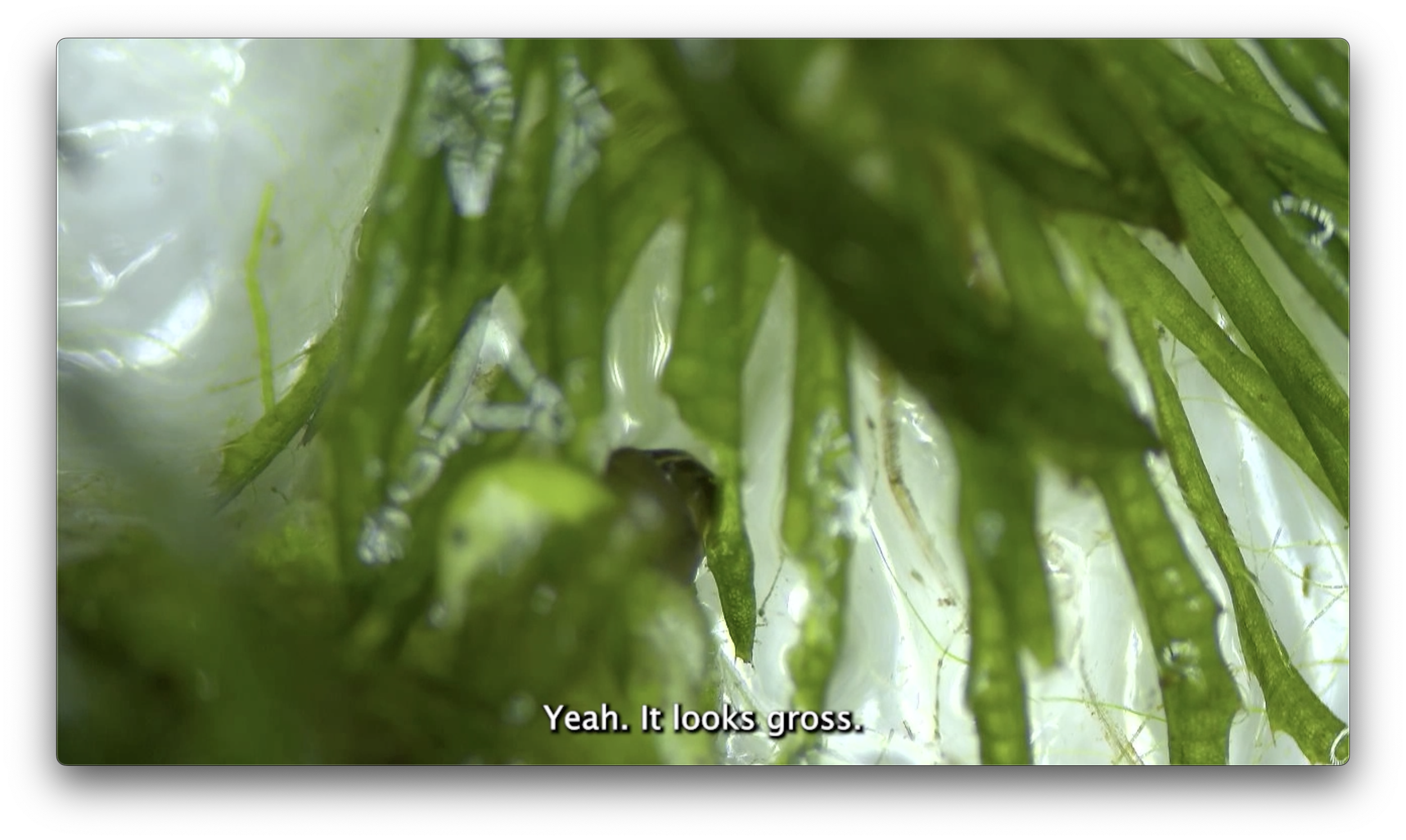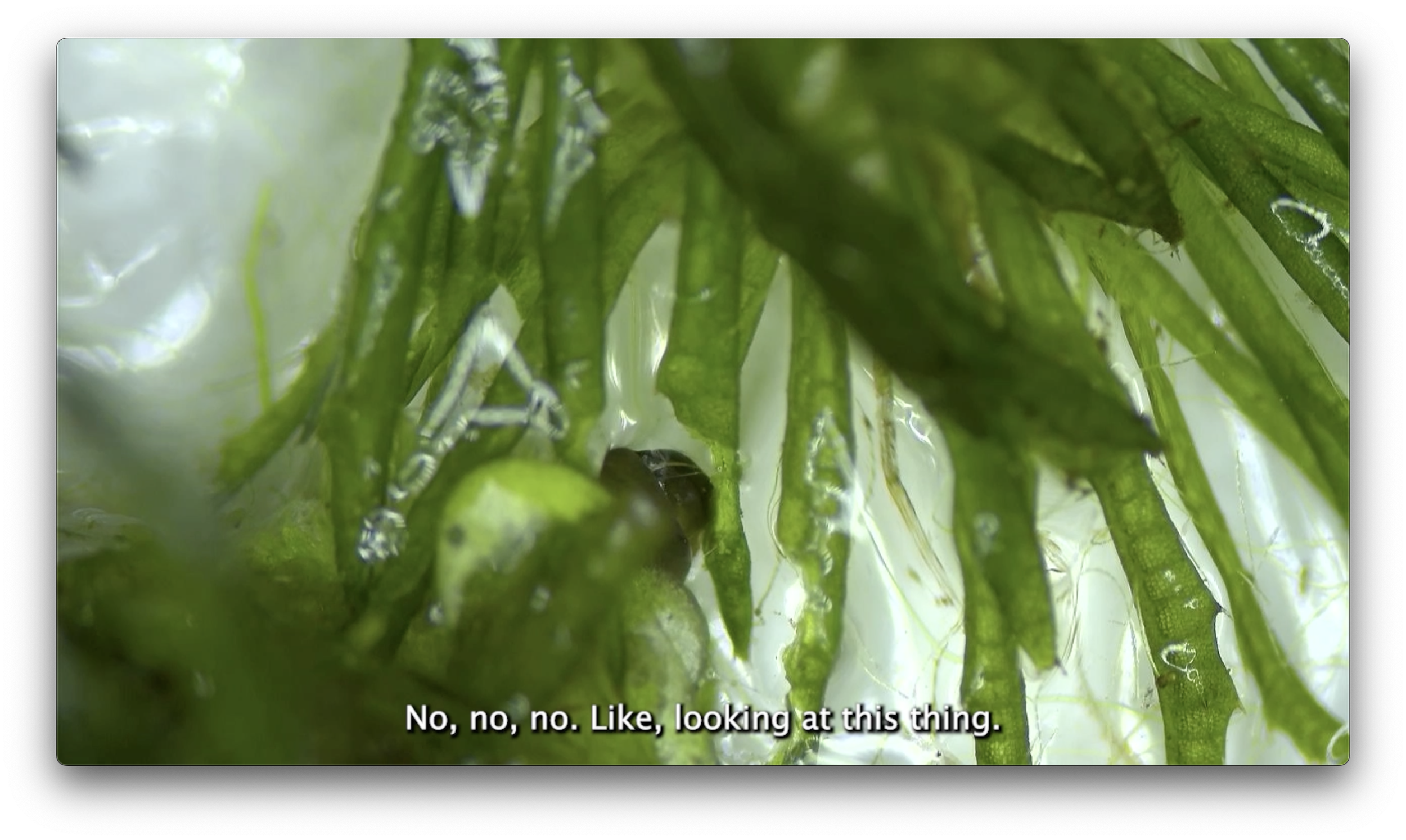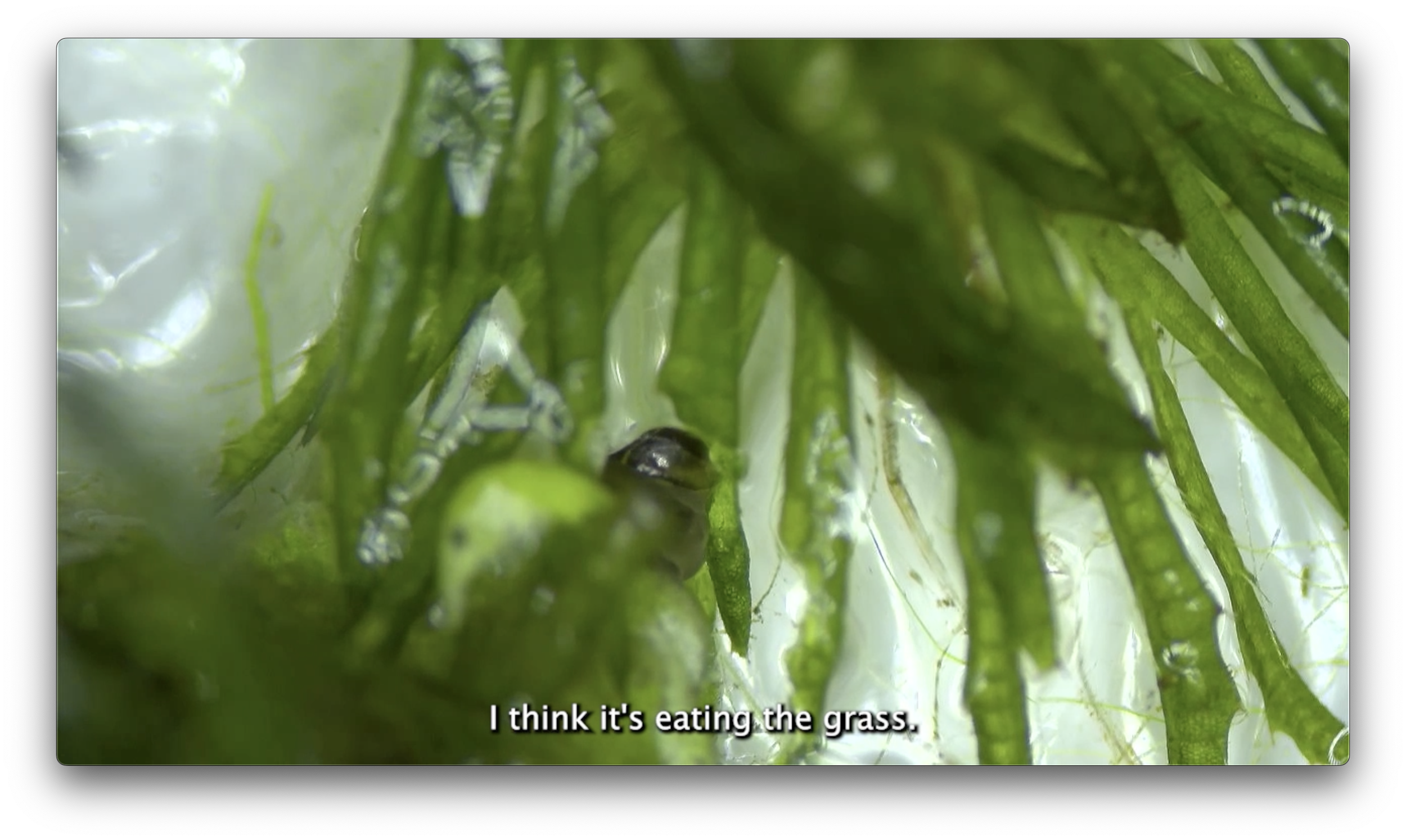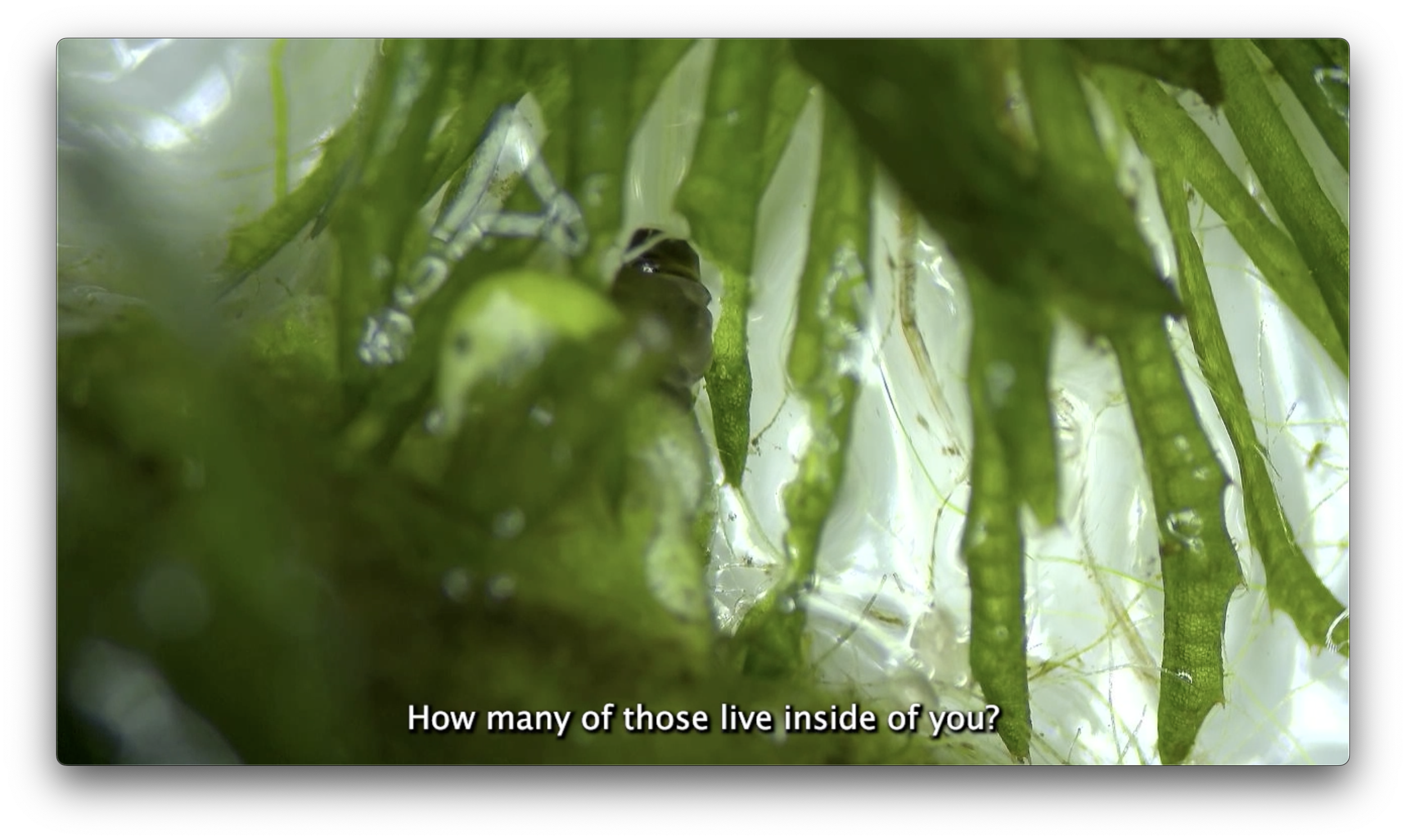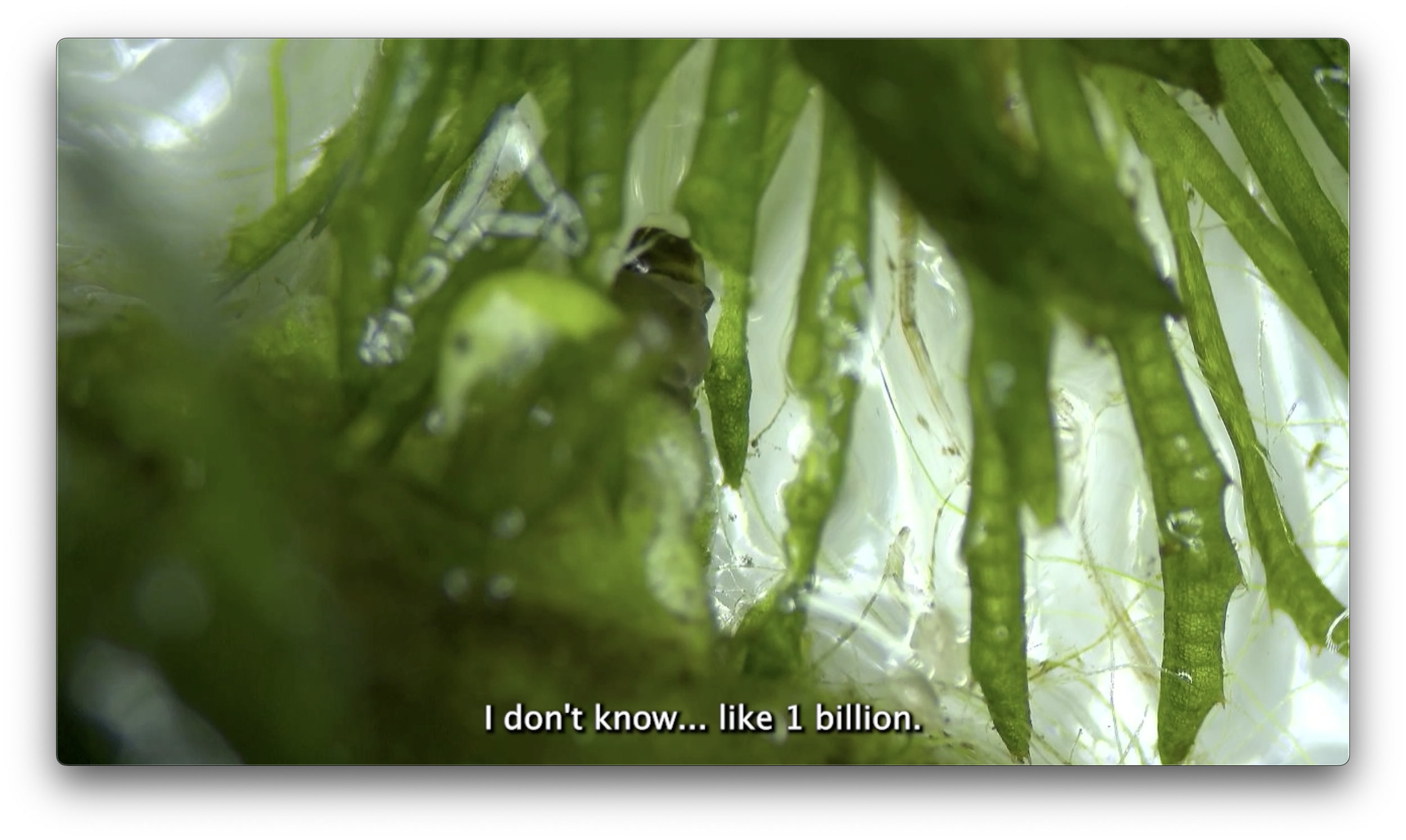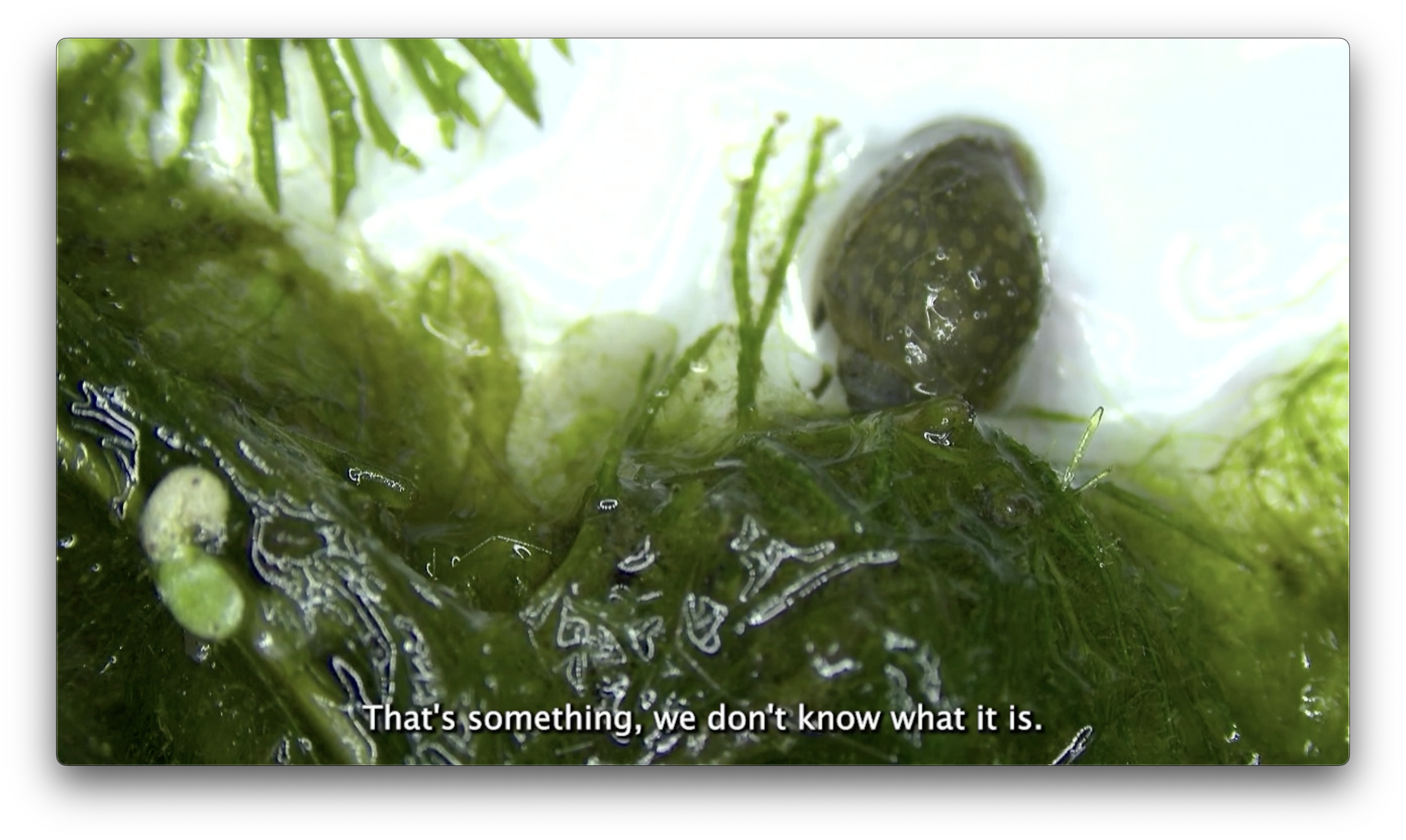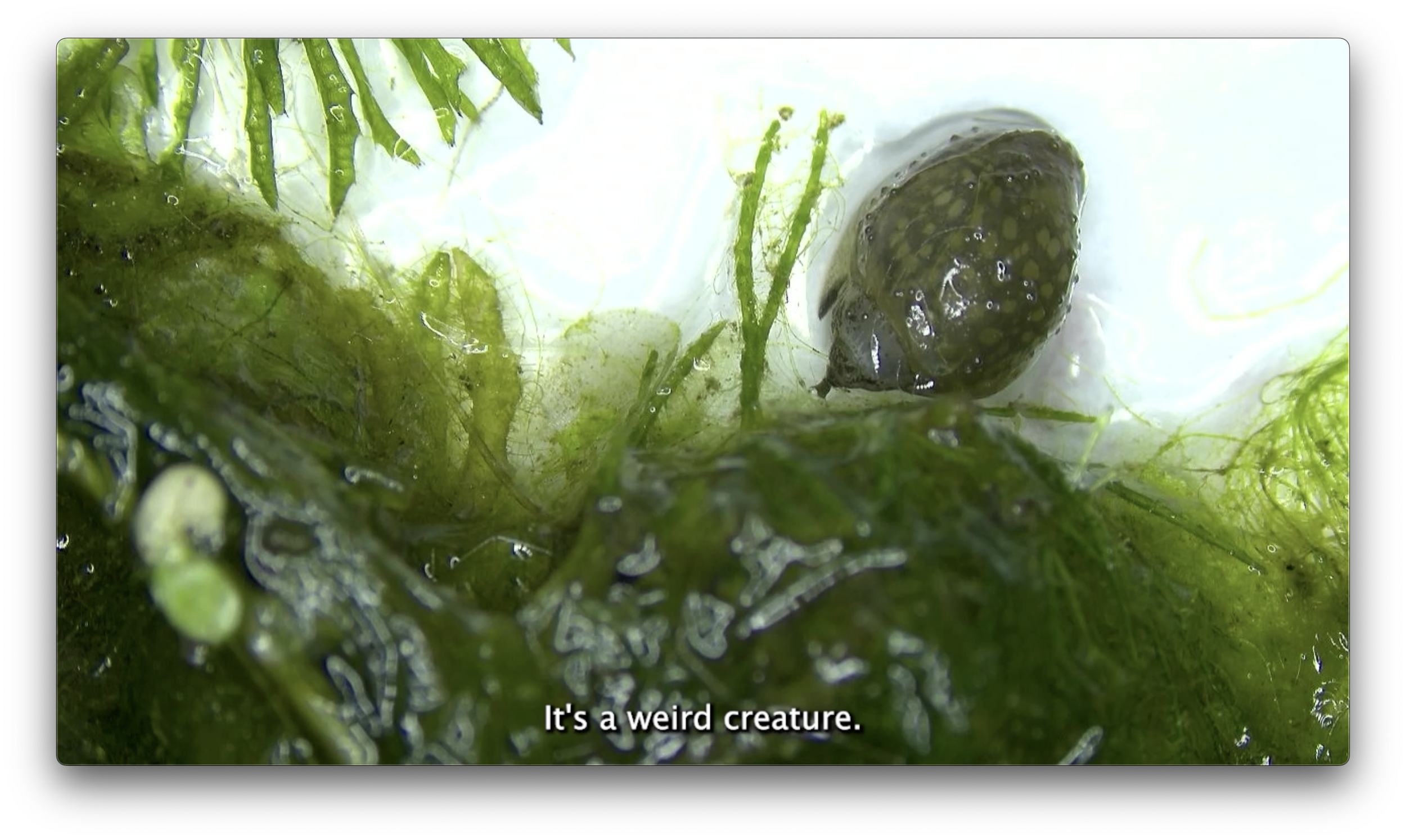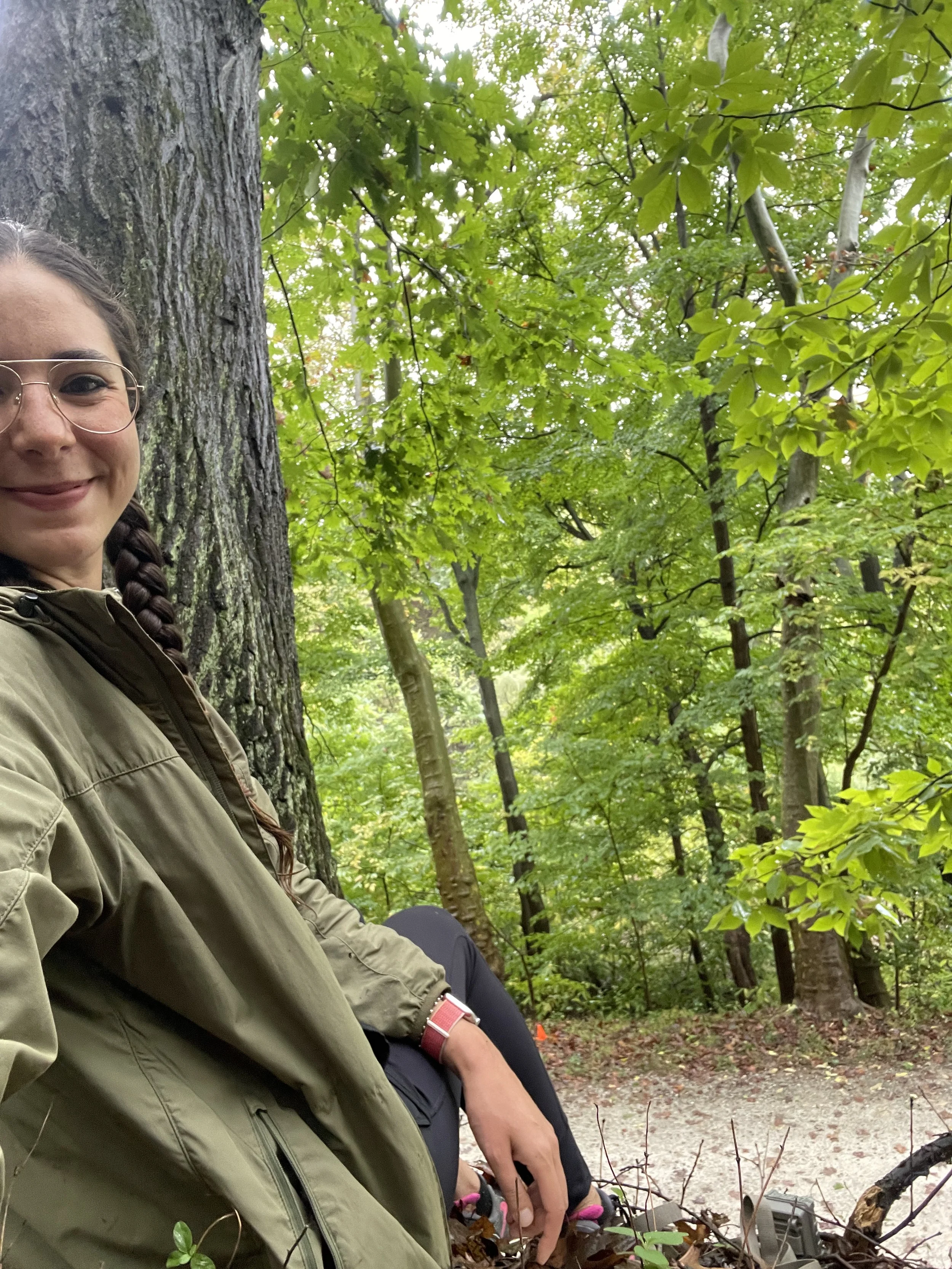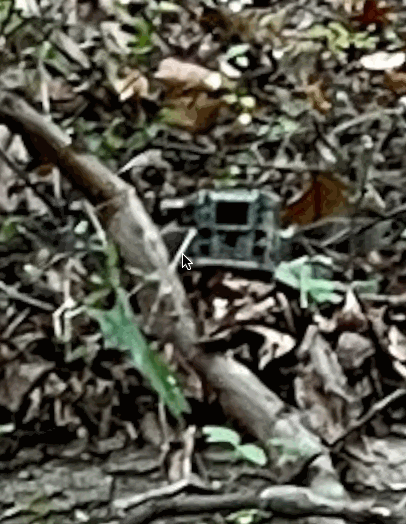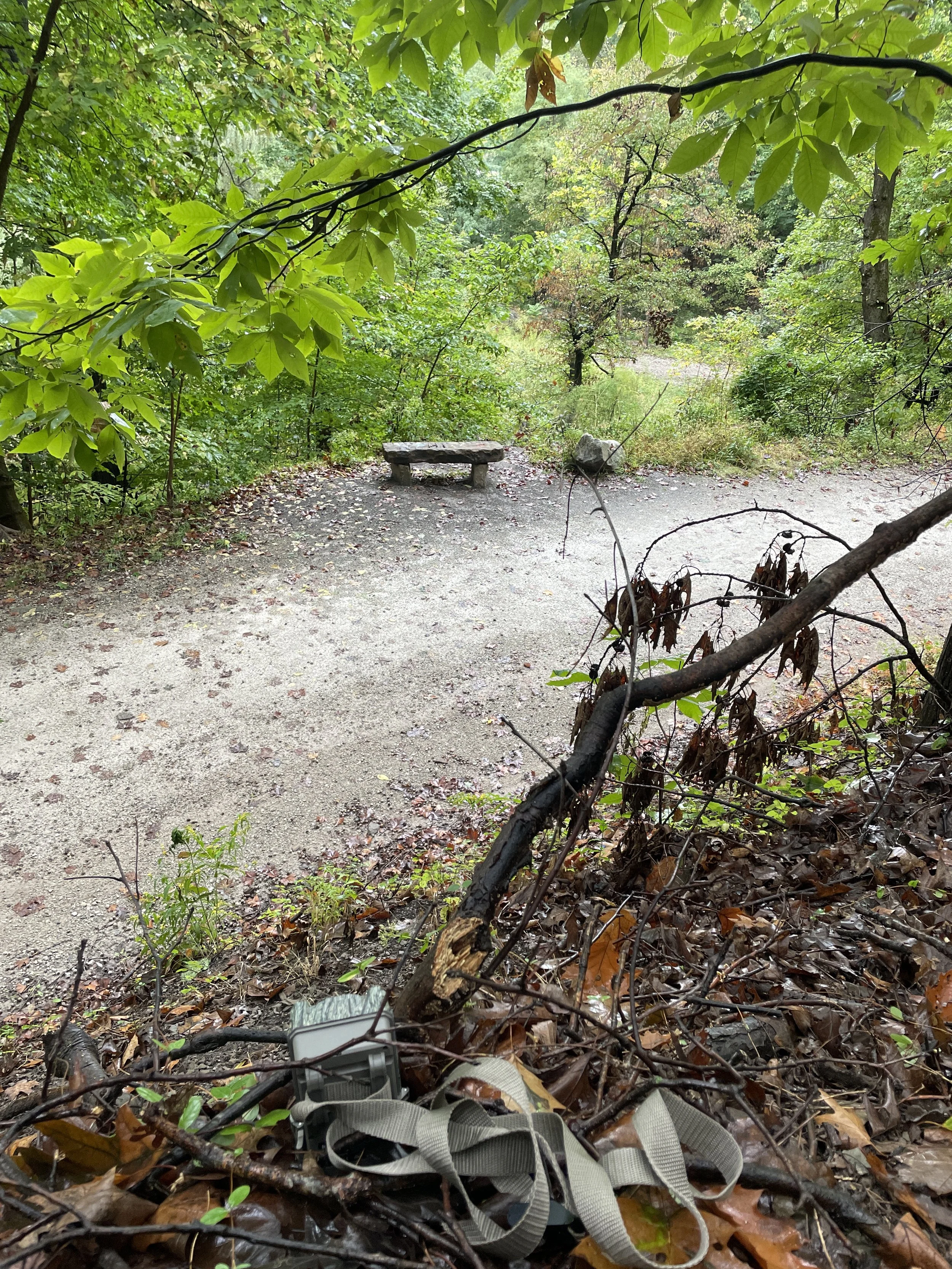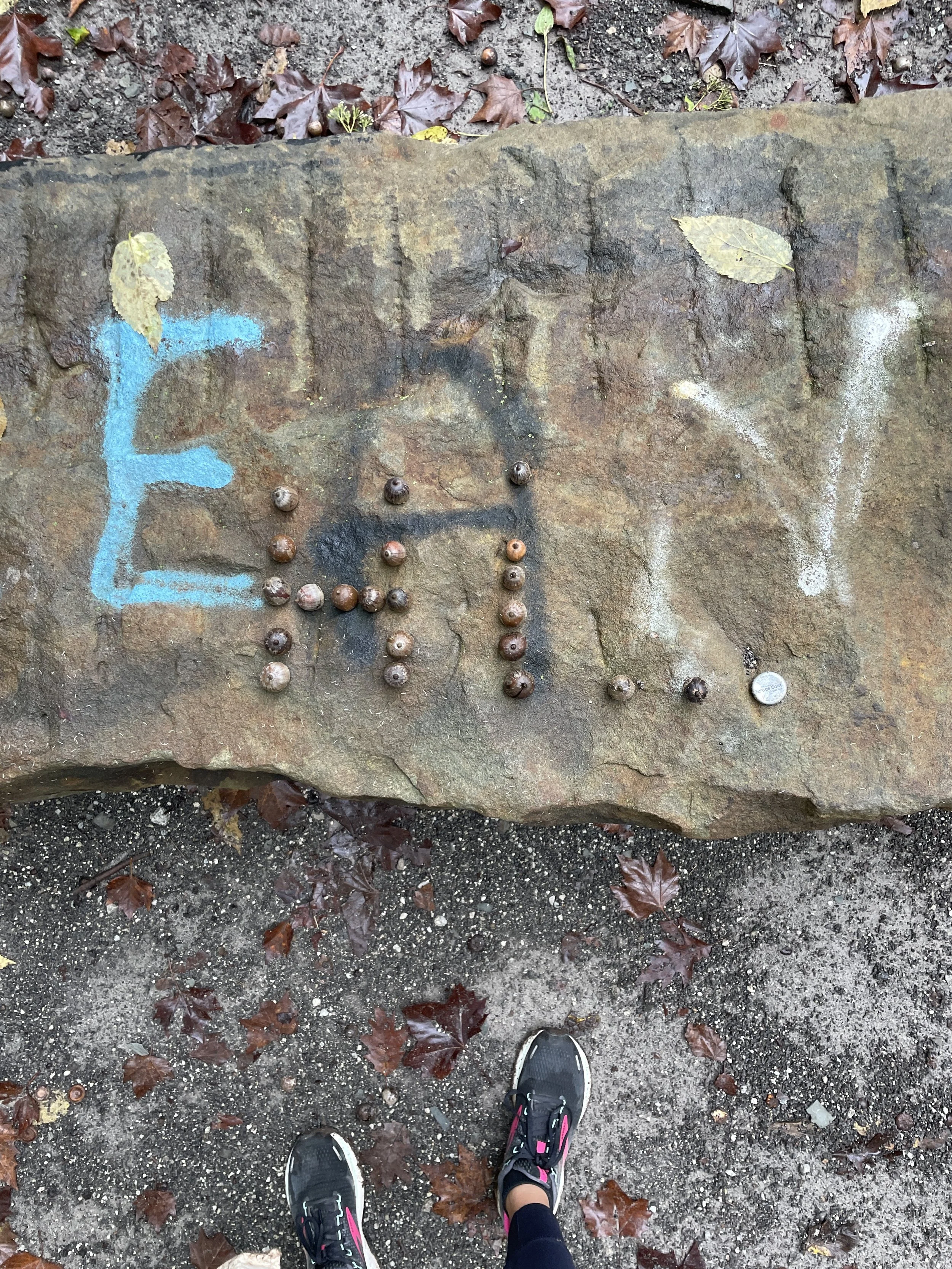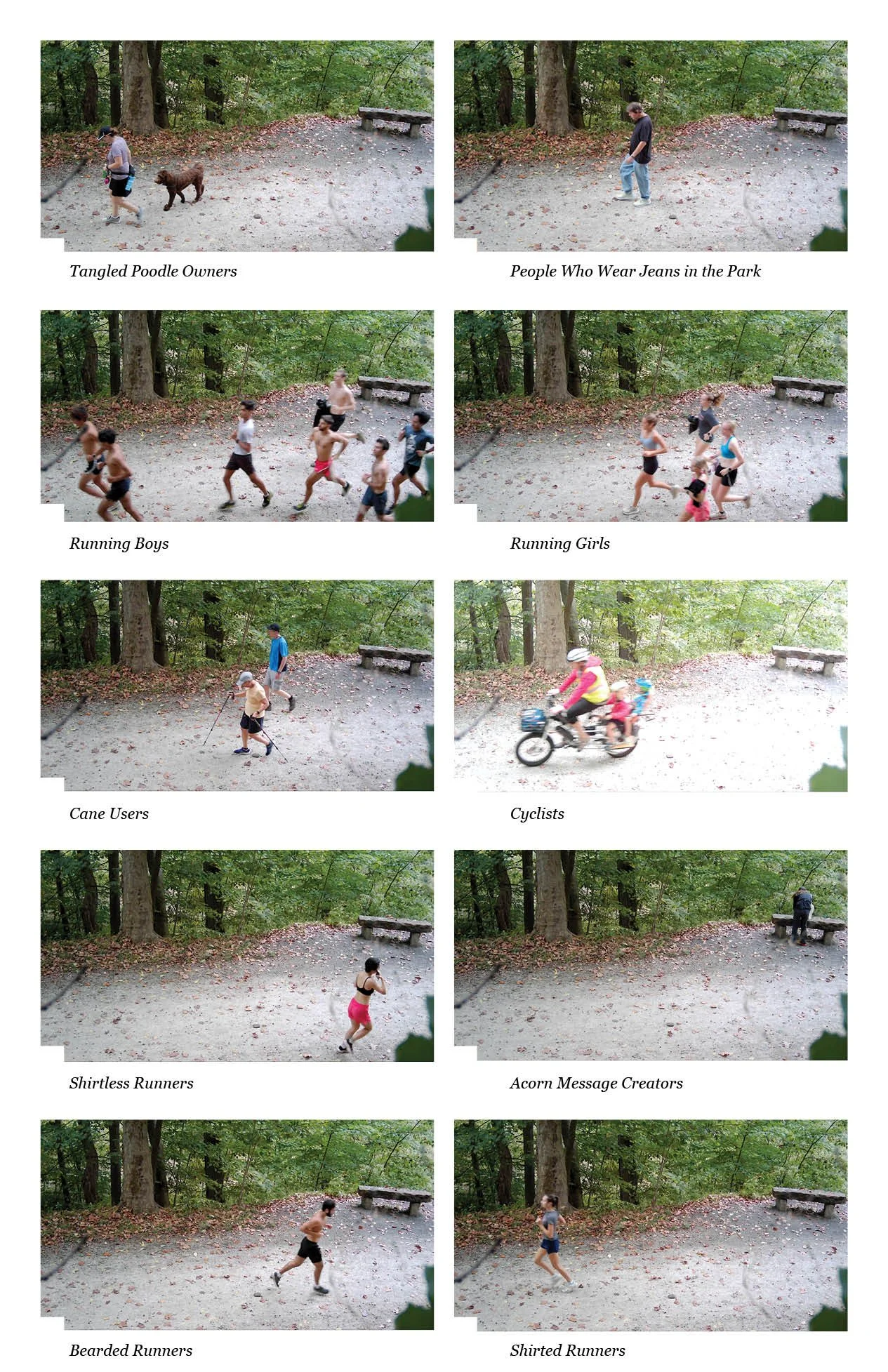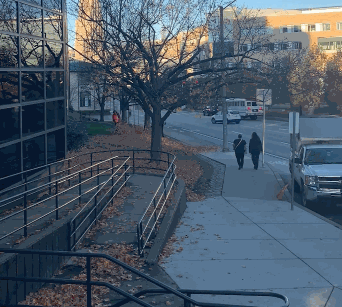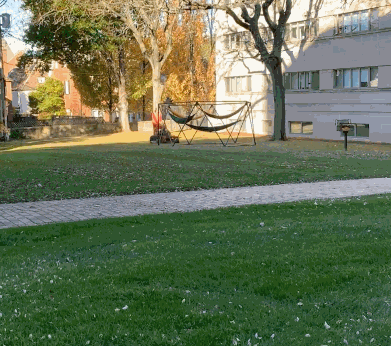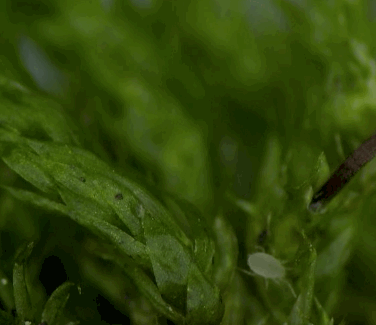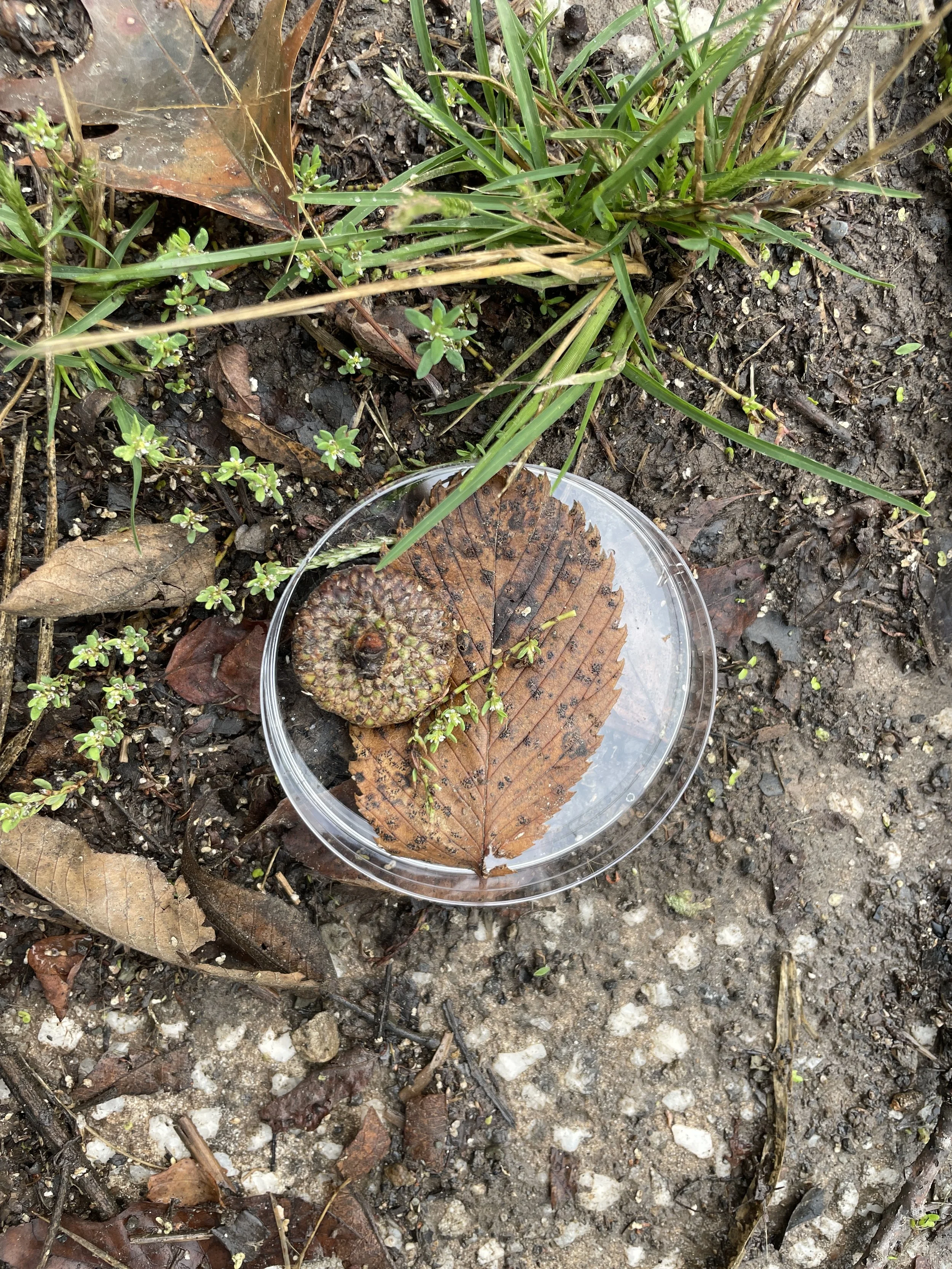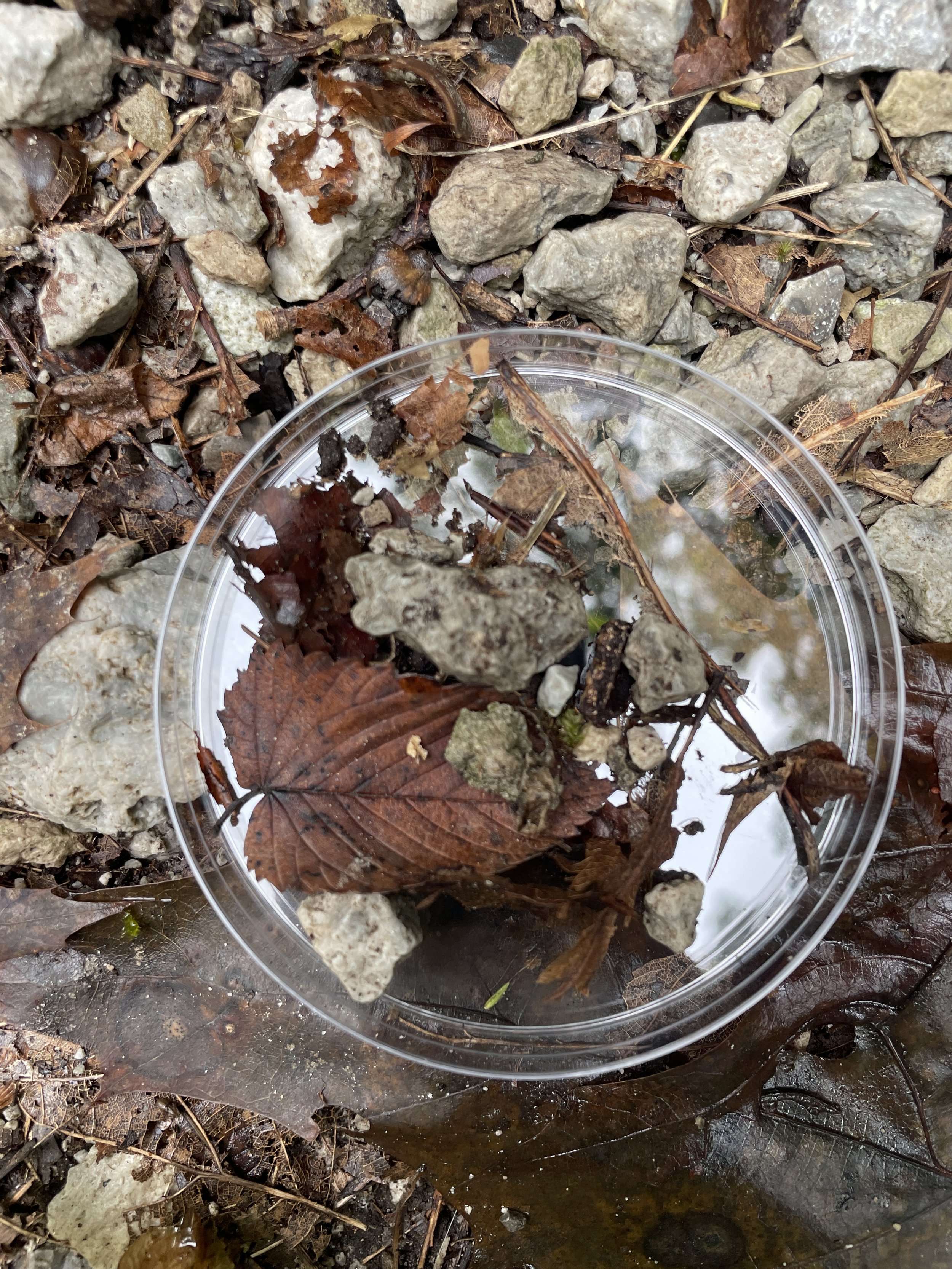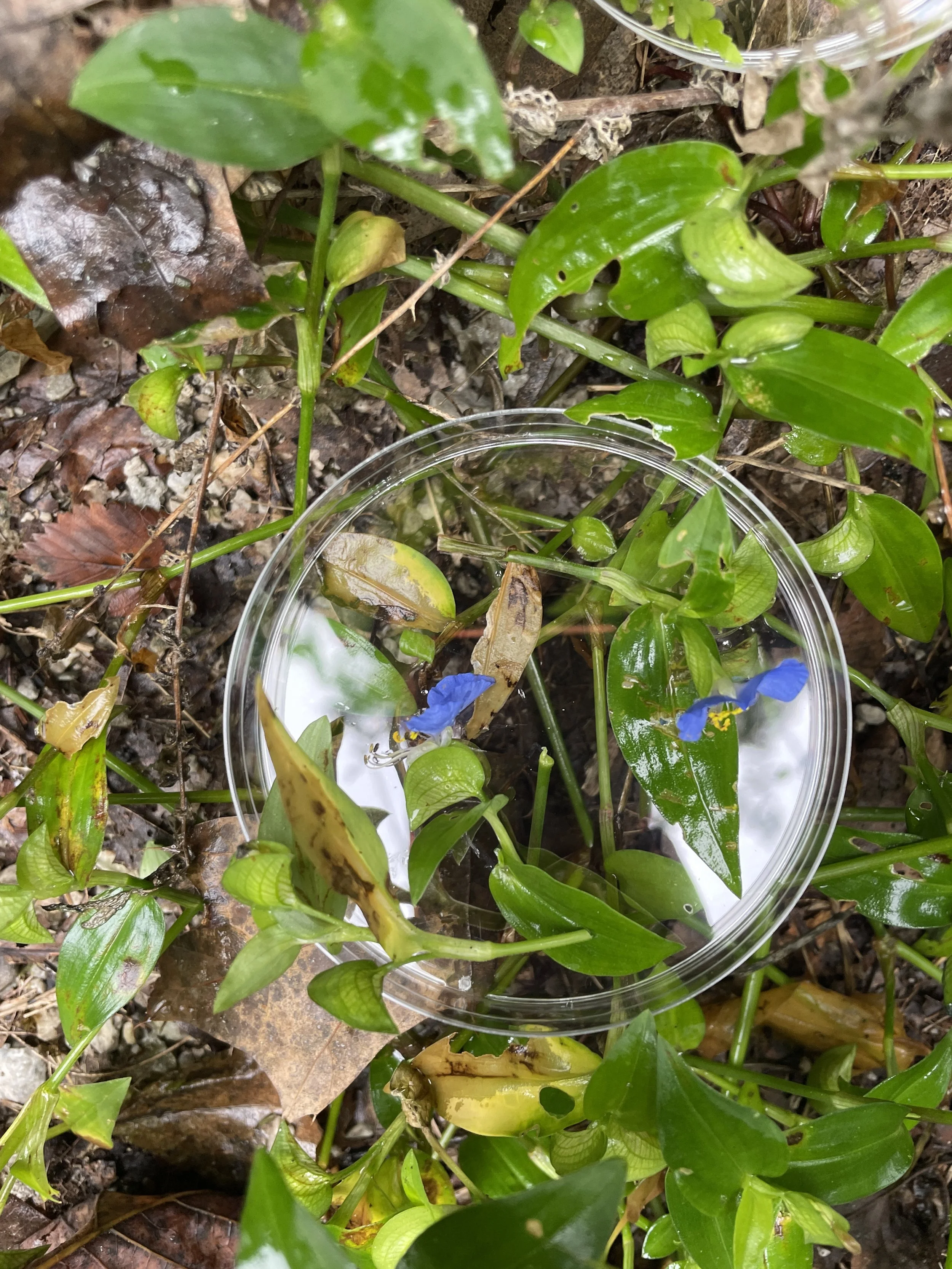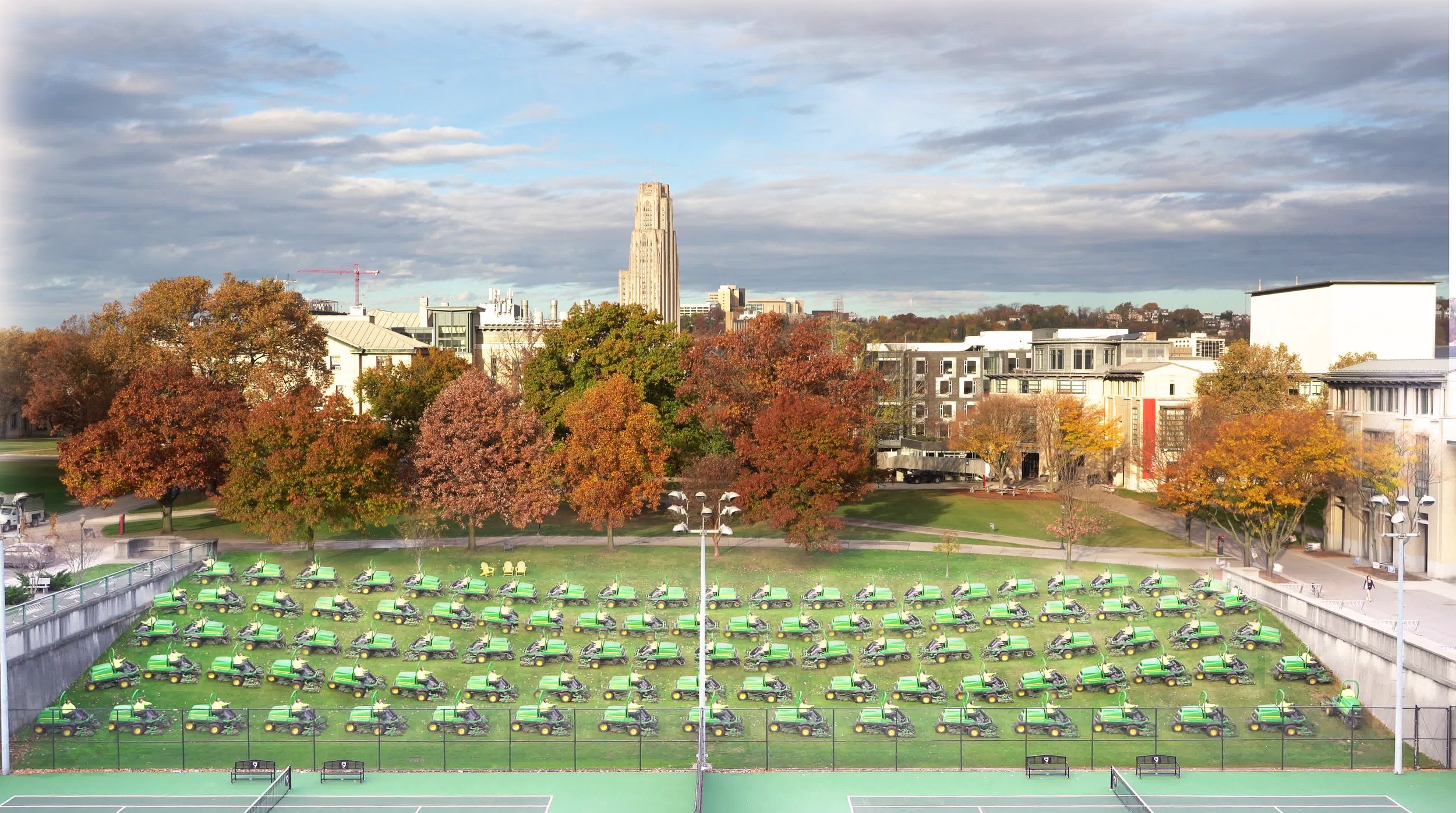
Experimental Captures
of the local landscape
Trail Camera Typology: Schenley Park Bench
September-October 2024
I was interested in places and the different things that happen within them through time. I'm especially interested in parks because I want to understand why people go to them and what they are doing in them. As people living in 2024, we can get pretty much everything we need indoors, in controlled environments. So why do people go outside? What do they do there? And what about the other forms of life in those spaces?
I wanted to capture a single place from a single view over a period of several days. The place I chose was a stone bench on a Schenley Park trail. Once I saw that someone had left a laptop on the bench. The next day, the laptop was gone and a note was in its place. I was running past it and didn't stop to look at the note. I've been wondering about that bench and the things that happen around it since then.
I mounted a trail camera to capture what happened on this bench over several days. The camera documented joggers, dog walkers, cyclists, deer passing through. Not a single person looked up at where I'd mounted the camera, despite it being in plain view.
While I was setting it up, I climbed up the dirt hill and sat beside a tree, toggling the trail cam settings. I saw many people pass through the trail below. Not a single person or dog looked up at me. I was not hiding - had they looked up they would have seen me. But they did not look up.
One morning, I left a message spelled out in acorns on the bench. Days later, someone rearranged the acorns into a new message: "Hi." It felt like mystical telepathy.
Person(s) Over Time: The Keepers of the CMU Soul
November 2024
As a landscape architect, one of my guiding principles in design has been to try to honor the spirit of the place, known as genius loci. The concept of genius loci is not too different from the concept of quiddity, for both concepts underline the idea that things (such as places, people, or objects) have a what-ness, a fundamental essence, or soul.
Perhaps my keen interest in place and my efforts in discovering a place's soul has made me curious about landscape maintenance workers, the keepers or guardians of the place's atmosphere. According to classical Roman religion, the genius loci shapes and guards the atmosphere of the place and influences those who inhabit or visit it. I think this is exactly what maintenance workers do. They actively tend to, care for, and sustain landscapes. People may not pay much attention to how this careful and consistent work shapes a place and probably don't realize that this work may be a necessary part of the place's identity.
The place I am capturing is the landscape upon which Carnegie Mellon University is set. My subjects in this study are three landscape maintenance workers on CMU's campus: Mario, Nate and Steve. I am not attempting to capture the essence of my subjects - as that calls for a different kind of inquiry; rather, I am trying to capture the essential work that they do in maintaining the soul of campus.
The Process:
My workflow involved a lot of coordination with the landscape maintenance team on campus. I wrote to head gardener Nate Holback describing my project's needs and intentions. Overall, the landscape maintenance workers I reached out to were positive and liked the idea of my project! This made me excited and motivated.
I spent early mornings setting up tripods on rooftops and in fourth-floor windows, capturing time-lapse footage of Mario mowing, Nate edging the Tepper lawn, Steve working the sloped hill by the tennis courts. I followed Mario around for two and a half hours as he blew leaves off Forbes Avenue.
What I Discovered:
I think that timelapse videos of the landscape work being done helps one appreciate the impact more. Seeing a before and after of the space is cool, but seeing the maintenance movements, the action is much more compelling.
My process helps reveal that most people pass through these spaces quickly, mostly limiting themselves to moving on paved pathways. The landscape maintenance workers inhabit these spaces in a different way. They move through every square foot of them. They get to the edges, they understand the shape of the space. They cover the ground.
Something I realized while working as a landscape architect is that so much of the success of your 'design' depends on how it's maintained, or tended to.
References:
I have been reading Jenny Odell's How to Do Nothing, and through her I learned about Maintenance Art. Through Jenny Odell I learned about Mierle Laderman Ukeles' Manifesto for Maintenance Art, 1969. Ukeles says, "I choose maintenance and I call it art. I call necessity art." I am inspired by Ukeles' work because my main objective is to draw positive attention to the work being done by landscape maintenance workers at CMU whose work may not be noticed or appreciated.
In trying to find ways to analyze, understand and celebrate the movements of individuals in space, I've been looking at NYT Athletics graphics. Specifically, I've been looking at 2021 articles about athletes: Simone Manuel, Sunisa Lee, Dalilah Muhammad, and Adam Ondra. I really like the subtle animations that highlight key movements and the smooth transitions between views.
An Attempt at Exhausting A Park In Pittsburgh
October-December 2024
When Ginger came to teach us spectroscopy, I unexpectedly discovered a microscopic bug when looking at a leaf from outside (I couldn't see it with my plain, human eyes). This made me curious about what else I was missing.
For my first project, I spent so much time in Schenley Park (I was trying to exhaust it - à la Perec). In how many ways could I get to know Schenley Park? What was interesting in it?
I collected a bunch of samples - algae from Panther Hollow lake, flowers, twigs, rocks, leaves - and brought them to the studio to see what I could find in a deeper look.
The shock of finding a bug on a leaf that was invisible to the naked eye really stunned me. It made me understand the leaf in a way I had never considered before. It became a whole landscape of its own, the world, or part of the world of this tiny bug. I needed to share this excitement.
I spent hours documenting microscopic life - using focus stacking techniques to create higher resolution images that revealed intricate details and tracked bug movements over time.
Watch: Microscopy Explorations
Reflections On Place:
My training and professional work as a landscape architect made me obsessed with the idea of "sense of place," which I think connects quite well to the course concept of "quiddity." Over the years, a lot of people have asked me what my "style" is as a landscape architect, and the best answer I can think of for that is: I don't exactly have a style, because on each site, what I want to do is honor the place, honor the genius loci. If I have a style, it would be "honor the genius loci."
I was trying to find new ways of "knowing" the landscape, of "exhausting" the landscape, of understanding "sense of place," and through this class, especially through my microscopy studies, my idea of "place" totally shifted… perhaps we experience a sense of place at a human scale, but in each place, there are worlds within worlds.
Reference:
Early in the semester, Golan referenced Georges Perec's An Attempt At Exhausting a Place in Paris. Funny, I had just read the book over the summer, as well as Perec's Species of Spaces, and was planning to try to do the same with a place in Pittsburgh.
